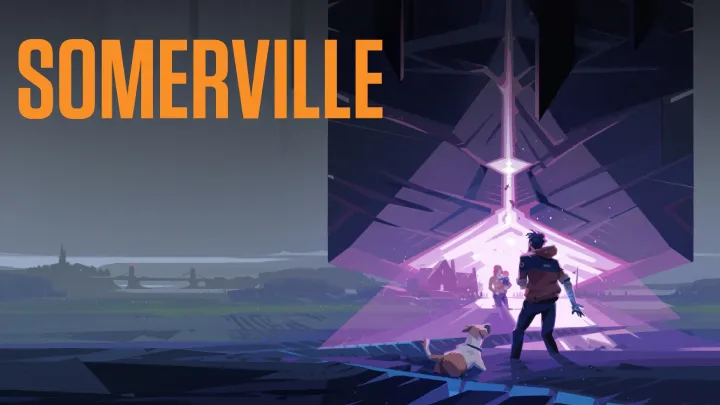Look Outside is a psychological exploration game that thrives on atmosphere, hidden mechanics, and player intuition. Unlike traditional adventure titles, it emphasizes observation, pattern recognition, and environmental storytelling. Many players stumble early because the game refuses to spoon-feed directions, instead urging you to “look outside” the obvious and uncover meaning in the subtle.
This article serves as a comprehensive 5,000+ word tips and guides handbook for Look Outside. We’ll dive into strategies for survival, puzzle-solving, narrative exploration, and player progression. With 10 carefully arranged sections—each offering detailed tips and advice—you’ll find everything you need to become confident and efficient in navigating the game’s mysterious world.
Understanding the Core Mechanics
The first step in mastering Look Outside is to understand how its mechanics differ from other exploration games. At its heart, the game rewards patience and curiosity. Movement, interaction, and observation may seem slow, but they build tension and immerse the player in its world.

Players should focus on three fundamentals: exploration pacing, environmental interaction, and perception of detail. Every choice you make—where you walk, what you examine, and when you stop—has consequences. Treat the game not like a sprint but like a meditative exploration.
A key tip here is to practice pausing often. Listen to the environment, note changes in background sounds, and watch for small visual cues. These seemingly minor elements often hint at hidden paths, secrets, or dangers.
Navigating the Environment Effectively
Look Outside presents environments that are open yet claustrophobic. Corridors, forests, and abandoned structures all create a sense of unease. Effective navigation is not about speed but about memory and orientation.
One of the best tips is to mentally map your surroundings. While some players rely on in-game cues, building your own spatial awareness will make progression smoother. Mark landmarks, pay attention to lighting changes, and memorize recurring objects such as broken furniture, graffiti, or unique soundscapes.
For new players, it’s useful to retrace your steps often. The game intentionally shifts certain details when you revisit locations, testing your ability to notice discrepancies. These changes are not random; they provide insight into the narrative and puzzle structure.
Managing Fear and Psychological Tension
Fear management is as much a skill as puzzle-solving in Look Outside. The game deliberately builds unease through audio-visual tricks, pacing, and ambiguous encounters. Many players freeze or panic, leading to mistakes or missed opportunities.
A useful tip is to separate real threats from psychological manipulation. Not every unsettling sound or distorted visual indicates danger. Sometimes, the game tests your ability to keep moving despite discomfort.
Deep breathing and focused play sessions can help. Break the game into manageable exploration chunks. If you find yourself overwhelmed, pause and return later—fatigue magnifies fear. With time, you’ll learn to differentiate between scripted scares and genuine hazards.
Solving Environmental Puzzles
Environmental puzzles form the backbone of Look Outside. Unlike traditional puzzle games, these challenges are woven into the scenery itself. A tipped-over chair, a flickering light, or a painting on the wall could all be part of the solution.
The key tip here is: interact with everything, observe constantly. If you’re stuck, return to previously visited areas and examine details you may have overlooked. Look Outside often hides answers in plain sight.

For complex puzzles, create a list of discovered symbols, sounds, or recurring motifs. Keeping track of these in a notebook makes connections clearer. Advanced players often notice patterns—like colors or rhythms—that link multiple puzzles together.
Item Collection and Proper Usage
Items in Look Outside are scarce and highly symbolic. Unlike survival horror games that overload players with tools, every item here serves a narrative and mechanical purpose. Collecting and using them effectively is essential.
A critical tip: never assume an item’s role is obvious. A broken watch may later synchronize with an environmental puzzle, or a scrap of paper could trigger a memory sequence. Hold onto items until their meaning becomes clear.
To stay organized, keep an inventory log. Note the time and place where each item was found. These contextual details often provide hints on their eventual usage. Remember: items are not just tools—they’re fragments of the game’s story.
Reading and Interpreting Clues
Clues in Look Outside are rarely direct. They take the form of fragmented notes, distorted voices, cryptic symbols, or even environmental changes. Success lies in your ability to interpret them rather than simply collect them.
One strategy is to group clues into categories: narrative, puzzle-related, and atmospheric. Narrative clues expand the story, puzzle clues aid progression, and atmospheric clues test your awareness. Distinguishing these helps reduce confusion.
Another advanced tip: revisit old clues once you’ve unlocked new areas. A vague note found early might make sense only after later revelations. The game is designed to reframe your understanding as you progress.
Progression Through Narrative Layers
Look Outside is built on layered storytelling. Each section of the game reveals part of the truth, but the narrative only becomes coherent when you piece the layers together. This requires patience and careful attention.
A useful guide here is to treat the narrative like a mystery novel. Keep track of characters, recurring themes, and contradictory events. The more notes you take, the easier it becomes to connect the dots.
For players who want the best ending, avoid rushing. Many of the deeper story elements only surface if you explore thoroughly and engage with optional sequences. Skipping these reduces the richness of the narrative experience.
Avoiding Common Mistakes
Even experienced players often fall into predictable traps in Look Outside. The most common mistake is rushing through areas without pausing to observe. This leads to missed clues, unsolved puzzles, and unnecessary backtracking.
Another frequent error is assuming all threats require confrontation. In reality, evasion and observation are often better tactics than direct interaction. Many players waste valuable time and resources panicking when avoidance would suffice.

Lastly, don’t underestimate the importance of sound. Players who ignore auditory cues miss half the game’s storytelling. Headphones are strongly recommended for full immersion.
Advanced Tips for Skilled Players
Once you’ve grasped the basics, advanced strategies open up new possibilities. These include exploiting the game’s subtle mechanics and anticipating its narrative twists.
One advanced technique is pattern stacking. Pay attention to recurring environmental cues across different areas—such as repeating symbols, mirror layouts, or sound distortions. These patterns often foreshadow events.
Another expert tip is controlled exploration pacing. By deliberately slowing your exploration in some areas while rushing through others, you can manipulate how certain scripted events unfold. Skilled players use this to avoid unnecessary scares or maximize narrative impact.
Preparing for the Endgame
The final stages of Look Outside are where all your observations, collected items, and narrative insights converge. Entering the endgame unprepared often results in confusion or missed story beats.
To prepare, review all notes and items before advancing into the final sequence. Organize your inventory, re-read journal entries, and revisit earlier areas if possible. The game rewards thoroughness with a more coherent ending.
Most importantly, trust your instincts. The final act is deliberately ambiguous, and players who rely too heavily on guides risk losing the personal, interpretive impact that defines the game. Preparation ensures you experience the ending at its fullest emotional depth.
Conclusion
Look Outside is more than a game—it’s an experience that challenges players to slow down, observe, and reflect. By following these detailed tips and guides, you can enhance both your survival and your appreciation of its layered narrative. Mastering its puzzles, managing fear, and interpreting its cryptic storytelling transforms Look Outside from a confusing mystery into an unforgettable journey.
The true key lies in patience, attention, and the willingness to look beyond the surface. Only then will the game’s secrets fully reveal themselves.

















